Home >WeChat Applet >Mini Program Development >WeChat Mini Program: Use of Rendering Tags
WeChat Mini Program: Use of Rendering Tags
- 高洛峰Original
- 2017-03-01 11:19:184580browse
There are currently only two rendering tags in the WeChat applet: conditional rendering and list rendering.
1. Conditional rendering
In the framework, we use wx:if="{{condition}}" to determine whether the code block needs to be rendered, because wx:if is a control attribute and needs to be added to On a label, that is, on the view label. But if we want to judge multiple component tags at once, we can use a
.js
Page({
data:{
text:"这是www.html51.com的内容",
btnText:"这是按钮的内容",
},.wxml
<button type="default" hover-class="other-button-hover"> default </button>
<button type="primary" bindtap="btnClick"> {{btnText}} </button>
<view wx:if="{{true}}">{{text}}</view>1). When the if condition is true, "This is the content of www.html51.com" can be displayed, as shown in the following figure:

2). When the if condition is false, "This is the content of www.html51.com" will not be displayed, as shown in the following figure:
<view wx:if="{{false}}">{{text}}</view> 
3). Of course, true and false in the above example can also be implemented in data binding format, so when the condition value of wx:if is switched, the framework has a partially rendered process as it ensures that the conditional block is destroyed or re-rendered on switch. The code and implementation renderings are as follows:
data:{
text:"这是www.html51.com的内容",
btnText:"这是按钮的内容",
show :true,
},<view wx:if="{{show}}">{{text}}</view>
4). We can also make dynamic conditional rendering judgments and perform conditional rendering when the mouse is clicked:
data:{
text:"这是www.html51.com的内容",
btnText:"这是按钮的内容",
show :true,
}, btnClick: function() {
console.log("按钮被点击了了...")
var isShow = this.data.show;
console.log("isShow:" + isShow)
this.setData({text:"这是新的51小程序内容"})
}After compiling, you can see:
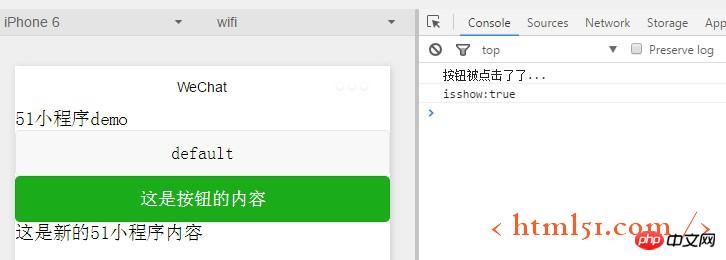
After setting show:false, you can see:
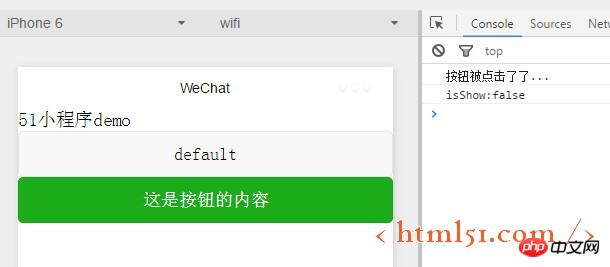
5). We still have to make another The loop action of "hide"-"show" after clicking.
btnClick: function() {
console.log("按钮被点击了了...")
var isShow = this.data.show;
console.log("isShow:" + isShow)
this.setData({text:"这是新的51小程序内容",show:!isShow})
}The compiled display result is as follows:
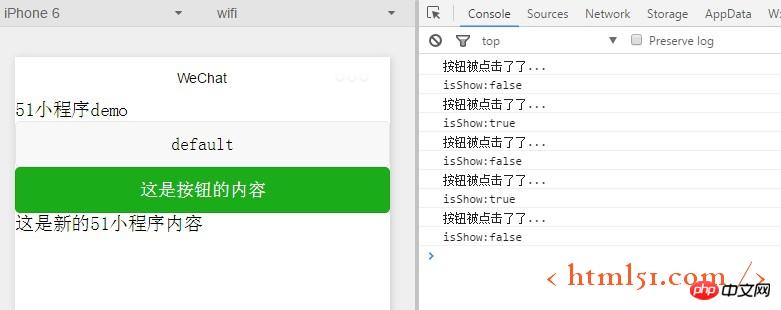
6) You can also use wx:elif and wx:else to add an else block, as follows Display:
<button type="default" hover-class="other-button-hover"> default </button>
<button type="primary" bindtap="btnClick"> {{btnText}} </button>
<view wx:if="{{show}}">{{text}} 1</view>
<view wx:else>{{text}} 2</view>According to the above code, when we click the mouse, it will display 1 2 in a loop. Let’s take a look at the result:
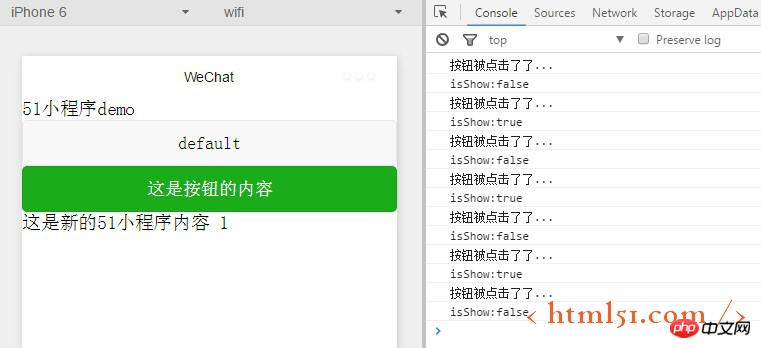
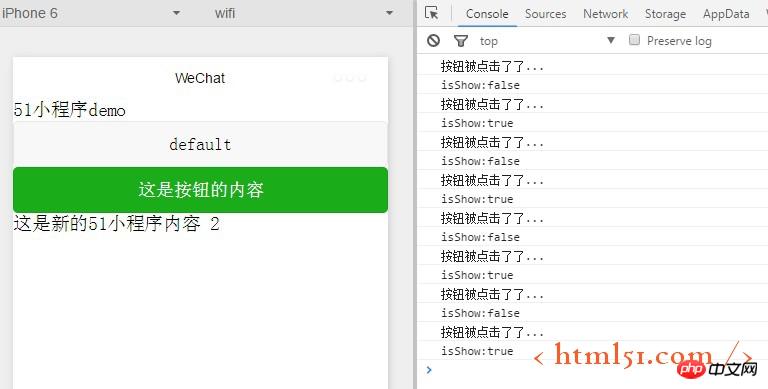
List rendering is actually what we often call for loop rendering. Using list data, we can loop through a bunch of news data, etc., and use the wx:for control attribute on the component to bind an array. , the component can be repeatedly rendered using the data from each item in the array.
<view wx:for="{{array}}">
{{index}}: {{item.message}}
</view>1). Let’s continue with the example. Add the following code to our previous .wxml file: <view wx:for="{{['aaa','bbb','ccc']}}">
www.html51.com小程序教程循环播放...
</view>The compiled result is as shown below:

data:{
text : "这是www.html51.com的内容",
btnText : "这是按钮的内容",
show : false,
news : ['aaa','bbb','ccc'],
},<blockquote>51小程序demo3) The question is, how can we display the contents of the array? By default, the subscript variable name of the current item in the array defaults to index, and the variable name of the current item in the array defaults to item. So item can display the contents of the array. Let’s take a look:
<view wx:for="{{news}}">
{{item}}
</view>The compiled display result is as follows:

<view wx:for="{{news}}">
{{index}} : {{item}}
</view>

btnClick: function() {
console.log("按钮被点击了了...")
var isShow = this.data.show;
var newsData = this.data.news;
newsData.shift();
console.log("isShow:" + isShow)
this.setData({text:"这是新的51小程序内容",show:!isShow,news:newsData})
}Let’s take a look at the demonstration effect:
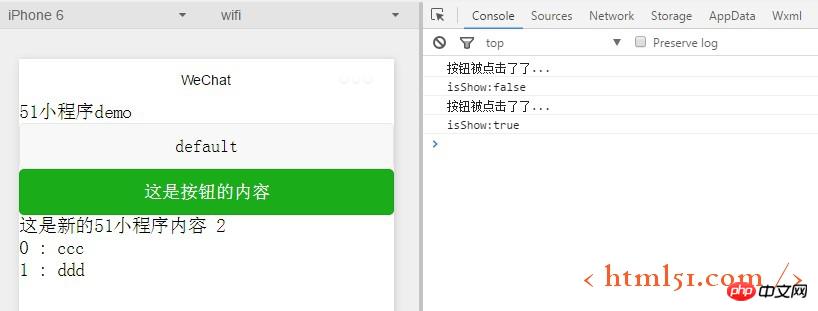
Notes in this section:
1. When assigning show in data, double quotes are not required.
For more WeChat applet: related articles on the use of rendering tags, please pay attention to the PHP Chinese website!
Related articles
See more- WeChat Mini Program Simple DEMO layout, logic, and style exercises
- Detailed explanation and examples of WeChat applet wx.request (interface calling method)
- WeChat Mini Program - Detailed explanation of WeChat login, WeChat payment, and template messages
- WeChat applet (application account) simple example application and detailed explanation of the example
- Detailed explanation of WeChat applet for loop

